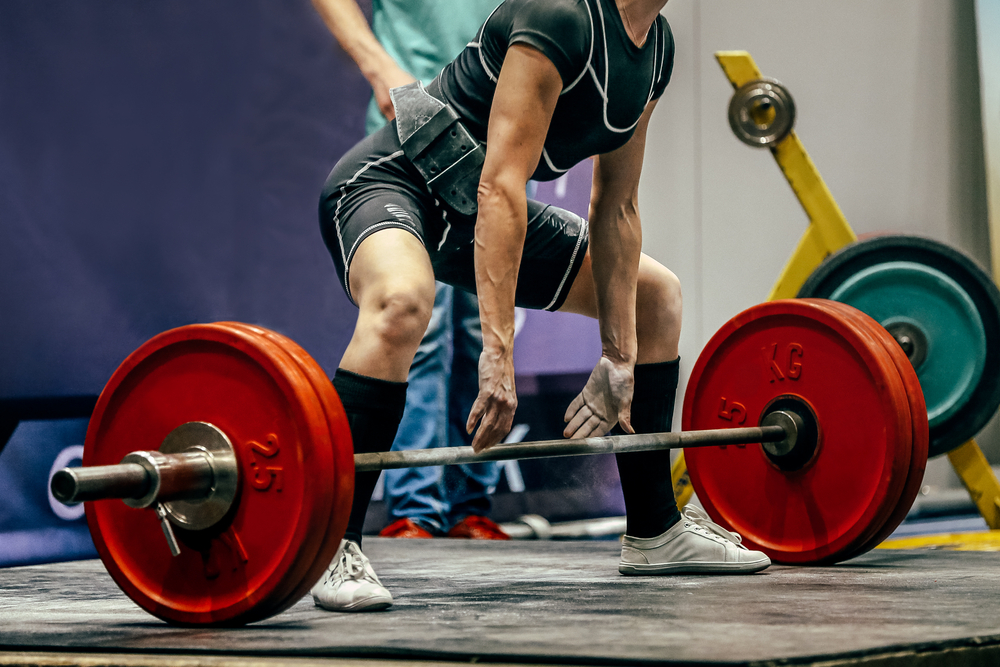Being one of the head coaches for Team Canada Powerlifting since 2012, I’ve worked with hundreds of world-class powerlifters, and have submitted over 4,500 attempts in international competition. With this experience, I’ve come to understand common mistakes that plague even the best of lifters on meet day.
What are these mistakes?
- Taking warm-ups after the ‘change deadline’
- Not willing to adapt the game plan
- Not being able to shake a missed lift
- Getting caught up with the ‘negative talk’ of others
- Not getting enough ‘energy’ or hype for deadlifts
- Having only a singular goal for the competition
Let’s look at these mistakes further so that you know what not to do when competing.
1. Taking warm-ups after the ‘change deadline’
You should always leave yourself enough time to change your opening attempt based on how your warm-ups are feeling.
Background and Problem: In a powerlifting competition, you will go through a weigh-in process where you’ll provide your opening attempts to the referee. These opening attempts may be changed after the weigh-ins. However, you can change your opener either up or down, but you must change them before 3-minutes to the start of the event. If you don’t get your change request in before the 3-minute deadline, then the opening attempt that you provided in the weigh-in process will be used.
You always want to leave yourself the option to change your opening attempt based on how your warm-ups are feeling.
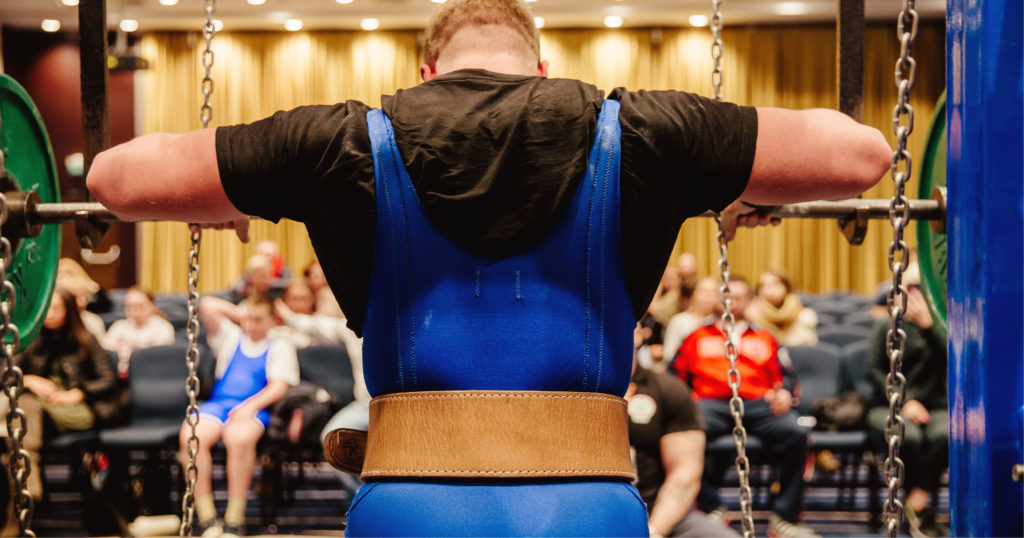
Game Plan: So as you’re warming up, you should be asking yourself if you’re on track for your opening weight. In other words, do you think that your opening weight will ultimately move like an opener?
The worst way to start a competition is by either having an opener that you have to grind or missing it altogether. So it’s important that your opener is a safe and confident lift that moves with a bit of speed. The only way you’ll know if that’s the case is if you finish all of your warm-ups prior to the 3-min change deadline, and then make the decision on whether to keep your opener or lower it (very rarely would I advise athletes to raise their opener).
Now, you might see some athletes take warm-ups after the change deadline.
This is usually the case because they are lifting last in the flight, and they don’t want to rest 15-17 minutes between their last warm-up and their opener. For these athletes, I still recommend taking their last warm-up before the change deadline. The risk is simply too high not having the option of changing your opening attempt if your last warm-up feels heavy and slow.
I can think of a handful of examples where I’ve seen athletes bomb at the World Championships because their opener was too heavy and they weren’t able to successfully complete a lift. This was because they didn’t get their last warm-up changed before the deadline.
I wrote a separate article on How To Warm Up For Powerliftingif you’re interested in specific warm-up protocols.
2. Not willing to adapt the game plan
You should always be willing to adapt the game plan you set for yourself.
Background and Problem: Athletes get too stuck on ‘what they did in training’ and aren’t responsive to how they’re performing in the moment. Athletes who are having a ‘bad day’ refuse to accept this fact, and stubbornly pick attempts that are unrealistic.
Game Plan: I want to explain how you should put together your game plan for the competition, and then how you should use and adapt that game plan on meet day.
1. How to structure your meet day plan.
Before the competition, it’s important to come up with a game plan for your attempts. The game plan should include a range of numbers for your opener, second, and third attempts. I like to give my athletes a 5-10kg range for each attempt.
For example, we might plan a 230kg attempt for a third squat, which we would do under most situations. But, then have a plan to go 235kg if we’re feeling good, or 225kg if we’re feeling bad.
These numbers should not be arbitrarily selected either. You should select your attempts for your game plan based on sufficient training evidence. What this means is taking an honest look at your training over the past 3-4 months and being able to pinpoint certain workouts that give credibility to the choices you make.
2. How you should use and adapt the meet day plan in the competition.
I just said that you should put together your meet day plan based on training evidence. However, on meet day, the exact attempts that you select should not be based on what happened in training, but rather how you’re performing through each attempt.
Let me explain…
There are several reasons why the weights might feel a bit different on meet day:
- You could be a little more nervous than expected
- You might have not slept very well the night before
- You might have had to cut a bit more weight last minute than usual
- You might have had to travel for the competition, perhaps across several timezones
- You might be lifting at a different time of day than when you normally train
- You might not yet feel comfortable lifting in front of people (spectators and referees)
- You might have pushed your training too hard, too close to the competition and you’re not feeling recovered enough
- And so on and so forth
For these reasons, you should always prioritize how the bar is moving in the moment versus how it moved a few weeks or months ago in training. This means taking the competition warmup-by-warmup, attempt-by-attempt, and assessing how you’re performing.
Don’t get fixated on numbers you think you should be able to do, or numbers that you want to do simply because they’re on your game plan. Select your attempts based on assessing your performance and being honest with your capabilities on that given day.
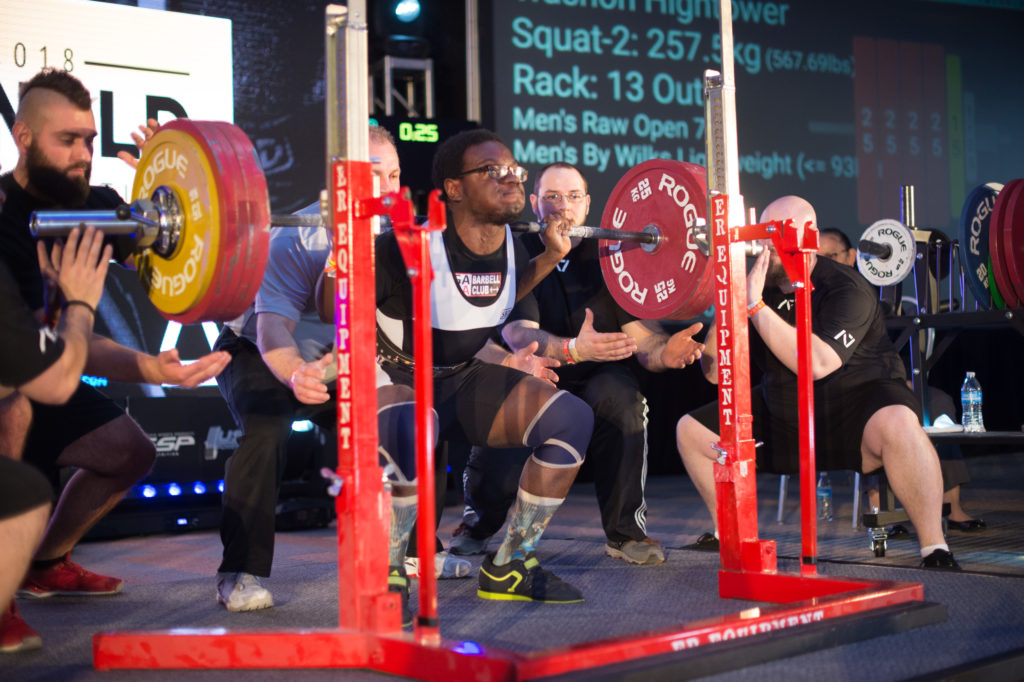
3. Not being able to shake off a missed lift
You need to be able to move on from a missed lift and not let it impact future performance.
Problem and Background: Athletes who miss lifts either have two choices.
- They can dwell on it, become frustrated, and let it affect their future performance.
- Quickly forget that it ever happened, focus on controlling their emotions, and concentrate on the aspects of the next lift.
At some point throughout your powerlifting career, you will miss a lift in competition. It’s not normal to expect that every competition you’ll have a 9-for-9 day and make all your attempts.
Game Plan: So in the competition, it’s not really that important that you missed a lift. What’s more important is how you handle the missed lift. The wrong way to handle it is to let the missed lift make you feel like you’re not strong or that you’re having a bad day.
Athletes who miss a lift will start to create cop-outs and excuses for their lack of performance by saying things like ‘I must not be strong today’. In addition, you can usually see a physical difference in their body language after missing a lift. They go from standing proud and confident to dragging their feet on the ground.
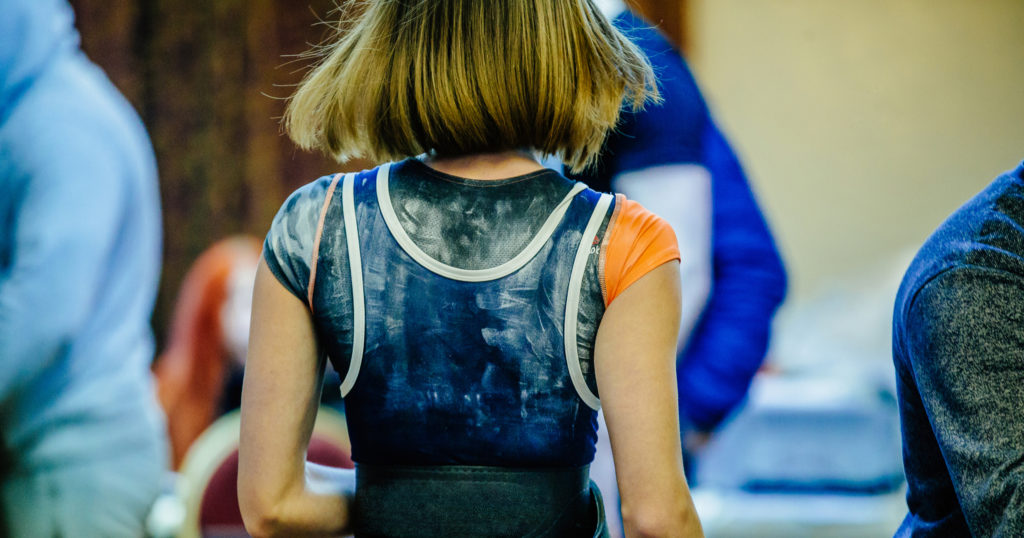
What the best lifters understand, the ones that handle missed lifts better than others, is that missing a lift doesn’t determine how you’re going to perform for the rest of the day. They view each lift as independent from one another. In other words, what happens on the previous lift has no impact on the next one.
In order to adopt this mentality and to ‘shake off’ missed lifts more easily you need to do two things:
1. Use a mental tactic called compartmentalization
Compartmentalization is a way to deal with negative emotions, feelings, or anxiety.
Here’s how it works:
- Identify the negative response that you feel after missing a lift. You’ll feel disappointed, upset, and angry.
- Isolate those feelings from everything else. Put a fence around those feelings and understand that those feelings are a direct cause of a specific event (missing a lift), but that those feelings don’t extend beyond the fence around them. In other words, they don’t get to impact any future action or decision. This is the idea of putting your emotions in a ‘compartment’.
- Close the compartment with negative emotions and then open another one. Fill this next compartment with more productive thoughts. I like to think about the positive influences in my life and the cues that I use for each of my lifts.
- Apply extreme focus on this positive compartment, as it will regulate your emotional responses throughout the competition. Rather than thinking about ‘compartments’, I coach my athletes on putting their negative emotions in a ‘firewall’ in the back of their brain and nothing can cross that firewall. Pick the metaphor that best suits you.
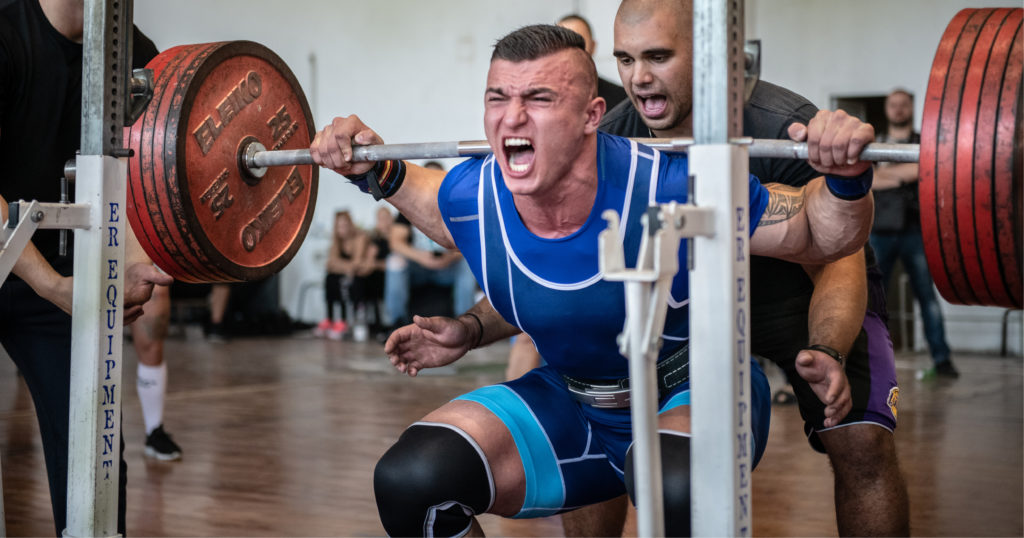
2. Trick your mind with physical cues
I mentioned how negative emotions can trickle down to your body language. If you feel disappointed, your body will show it. However, this phenomenon works the other way too. Cues from your body language will also shape your emotions.
Even if you feel disappointed, you should continue to walk around with confidence. Pull your head up and put your shoulders back. Walk tall, don’t drag your feet, and take deep, purposeful breaths. You’ll notice that these simple physical cues will help your mind from racing into negative self-talk.
The best way I can explain this is to ‘fake’ feeling good through your body language. Be aware of self-doubting and self-critical body language, and change it immediately.
4. Getting caught up in the ‘negative talk’ of others
Don’t get caught up with other athletes complaining about how bad their competition is going.
Background and Problem: In a competition environment, you will hear other athletes talk negatively or start complaining. This is especially true when the competition doesn’t go the way an athlete expects. Complaining about the negatives is human nature — people like to talk more about the negatives than the positives. The problem is that if you surround yourself with people like this too much, you’ll start believing the negatives.
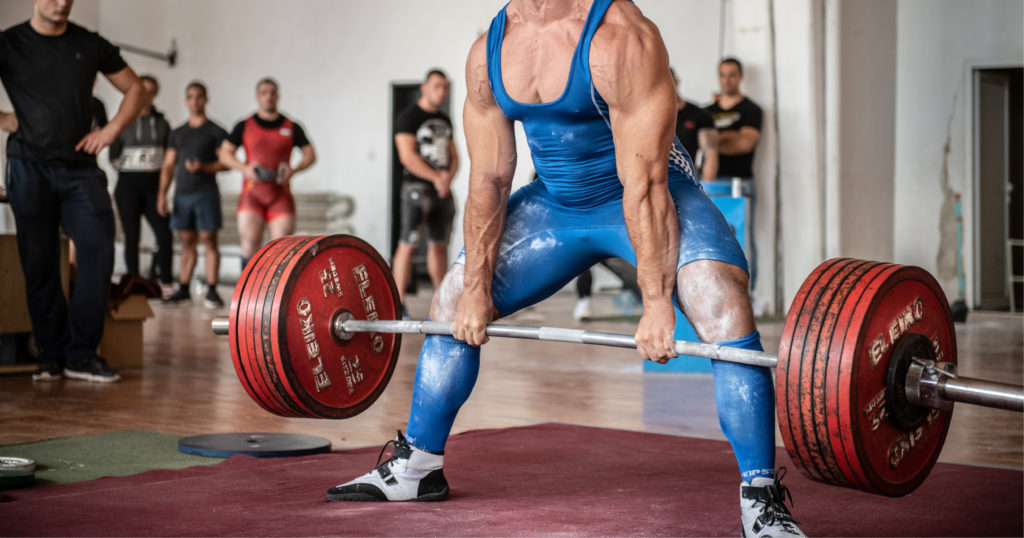
This complaining can be quite grandiose where an athlete starts yelling and screaming and throwing their belt. However, this is actually not the kind of complaining that I want to address. There is a more insidious version of complaining that will impact your performance on meet day without you even realizing it.
It all starts with athletes showing up to a competition and expecting everything to be perfect. They expect that the competition will run on time, that there will be enough equipment in the warm-up room, that their lifts will go according to plan, and so on and so forth. When things don’t go perfectly for these athletes, they will start to insidiously complain to anyone who will listen.
You might overhear them saying things like:
- “I can’t believe we’re 30-minutes behind schedule. I mean, whatever, it’s all good, but it totally affects our warm-ups now”.
- “It’s super cold in here. It’s a good thing I brought a jacket. Have you ever lifted in an environment this cold before?”
- “I got two red lights for squat depth. I always squat to depth. I don’t think the judges know what they’re doing. You better watch your depth too”.
Game Plan: The moment you identify these people at the competition, you need to remove yourself from them altogether. This means not using the same warm-up rack as them, not sitting next to them in the staging area, and not talking to them until after the competition.
As soon as someone starts to verbalize any negative aspects of their environment it opens up the door for them and others to create excuses for their performance or lack thereof. As well, when others are doubting themselves and their abilities, you might get swept up in a cycle of self-doubt too.
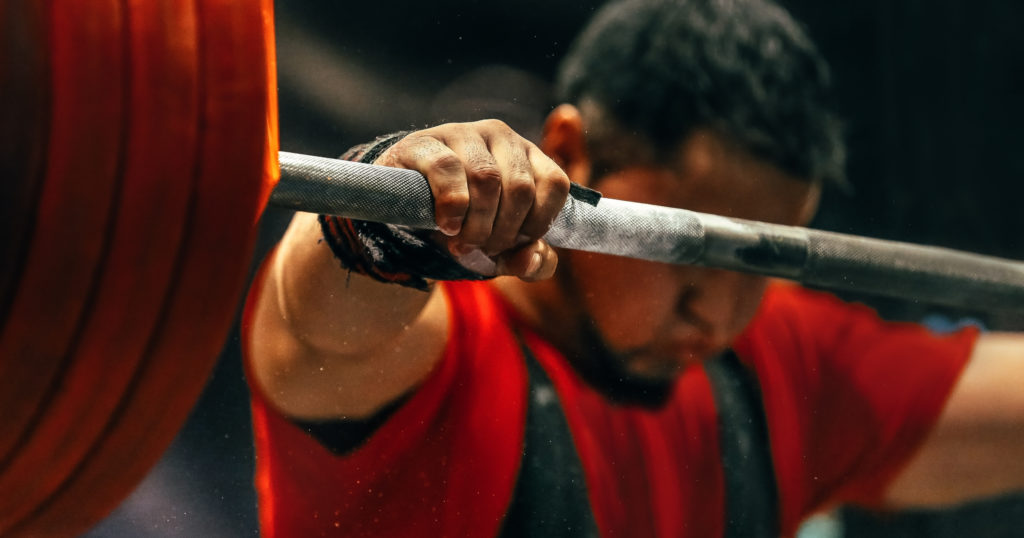
The ‘complainers’ don’t actually know that they’re doing anything wrong.
Humans are hard-wired to notice things that are not ‘right’ or in accordance with our expectation of how we think the world should be. This is a survival mechanism in order to protect us from harm. So it’s a lot easier to talk about ‘problems’ rather than ‘solutions’.
Be diligent recognizing when others are being negative and don’t let their self-doubting realities become your own.
5. Not getting enough ‘energy’ or ‘hype’ for deadlifts
You need to make sure that you plan a specific strategy for hyping yourself up for deadlifts.
Background and Problem: Energy levels tend to fade throughout the day and you need to get hyped up more than you think for deadlifts. A typical competition runs between 4-5 hours. Because your workouts only last 1-2 hours, you need to understand that you’ll be expected to perform your lifts over a longer course of time than you normally would in training.
What I usually see in a competition is athletes sustaining good energy/hype levels during the squat and bench press, but then start to crash as they’re warming up for deadlifts. This is due to the fact that they’ve already been in the competitive environment for several hours.
Game Plan: While these athletes are going ‘down’ with their energy, you need to be going ‘up’. You will need a strategy for increasing your energy/hype heading into the deadlifts.
Some of my recommended strategies are:
- Eat something sugary while you’re warming up for deadlifts. Any sort of candy will do the trick. Then keep snacking on this candy through your deadlift attempts.
- Time your caffeine throughout the day so that it would be appropriate to have another hit before your deadlifts.
- If you listen to music on game day, save your favorite hype up song for deadlifts
- Perform intense breathing. A few forceful exhales will increase your intensity and mental acuity.
- Use keywords focused around intensity such as ‘be aggressive’.
- Focus on high energy body language — walking tall, shoulders back, chest up. Don’t drag your feet around and ‘look tired’.
6. Having only a singular goal for the competition
You need to structure multiple goals for your competition so that your success doesn’t hinge on one outcome. Athletes who have a singular goal for their competition will experience more feelings of failure.
Let me explain what I mean by that…
An athlete’s goal could be to achieve a certain milestone. For example, benching 182.5kg/402lbs. This would be considered a singular goal — one goal that determines the success of their competition.
Background and Problem: The problem with a singular goal is that the success or failure of their performance rests on a narrowly defined set of parameters. Athletes that set singular goals will always leave the competition feeling discouraged if they don’t accomplish their goal. This is because it creates an all-or-none situation where you either achieve the goal or you don’t.
You succeed or fail.
With singular goals, you don’t recognize other small wins you might have had throughout the day of competition. You hang your hat on one milestone and ignore any other accomplishments.
Game Plan: Setting goals for your powerlifting competition should allow for several ways that you can achieve success.
As such, I like to structure three types of goals for athletes:
- Process Goals
- Performance Goals
- Outcome Goals
1. Process Goals
These goals include anything that you can control. This could be anything from maintaining a positive mindset throughout the competition to how you set up and execute the movements.
For example, a process goal could be, “not complaining if I miss a lift”, or “waiting for all of my referee commands”. If you’ve competed before, process goals should naturally extend from your previous competition. Perhaps in a previous competition, you hitched a deadlift lockout. You would have spent some time in training trying to correct this movement deficiency. So in this upcoming competition, your goal would be to have a “solid lock-out on deadlifts”.
2. Performance Goals
These goals involve the numbers that you want to lift. They should be challenging, yet realistic goals based on training evidence. For example, you could say: “In training, I’ve benched 3 singles at 175kg/385kg, therefore, my goal is to bench 180-185kg/ 396-407lb on my third attempt”.
Notice how I include ranges for the third attempt. This avoids the trap of having to rest all your success on an individual number. It also allows you to adapt the plan on meet day based on how you’re performing.
Here’s another solid trick for structuring your performance goals:
In addition to your number goals, you could also have a performance goal of “making all three attempts”. When you combine the numbers you want to lift with the number of attempts you want to make you give yourself the ability to miss one performance goal while making another. This is a good recipe for success.
Using the example above, if you only lifted 177.5kg/390lbs, which was below your goal range for the numbers you want to lift, but you made all three attempts, then you can still walk away achieving one of your performance goals.
3. Outcome Goals
These goals focus on the ‘big picture’ of the competition but rely on several factors outside of your own control. This is where meet conditions and other people’s performances might alter the achievement of this goal. For example, an outcome goal could be to “win my weight class and earn a spot on the National team”.
While you can do everything in your power to achieve this goal, including making all of your attempts and hitting personal best numbers, there may be another competitor who simply out-performs you.
Just like performance goals, outcome goals should include ‘ranges’.
For example, you could say: “my goal is to place 3rd at minimum, but if I’m in a good position by the final deadlift, my goal is to aim for silver or gold”. Again, this is a way that you can walk away from the competition still feeling like you have achieved some level of success without the pressure of having a singular goal.
The takeaway: set at least one goal for each type and you’ll experience a lot more success at the end of the day as you reflect on your performance.
Final Thoughts
Every powerlifting competition you do is an opportunity to learn what you can do better. Use the mistakes covered in this article to better prepare for future success at your next competition.
Editor’s note: This article is an op-ed. The views expressed herein and in the video are the author’s and don’t necessarily reflect the views of BarBend. Claims, assertions, opinions, and quotes have been sourced exclusively by the author.
Feature image from @everydayavi Instagram page.
